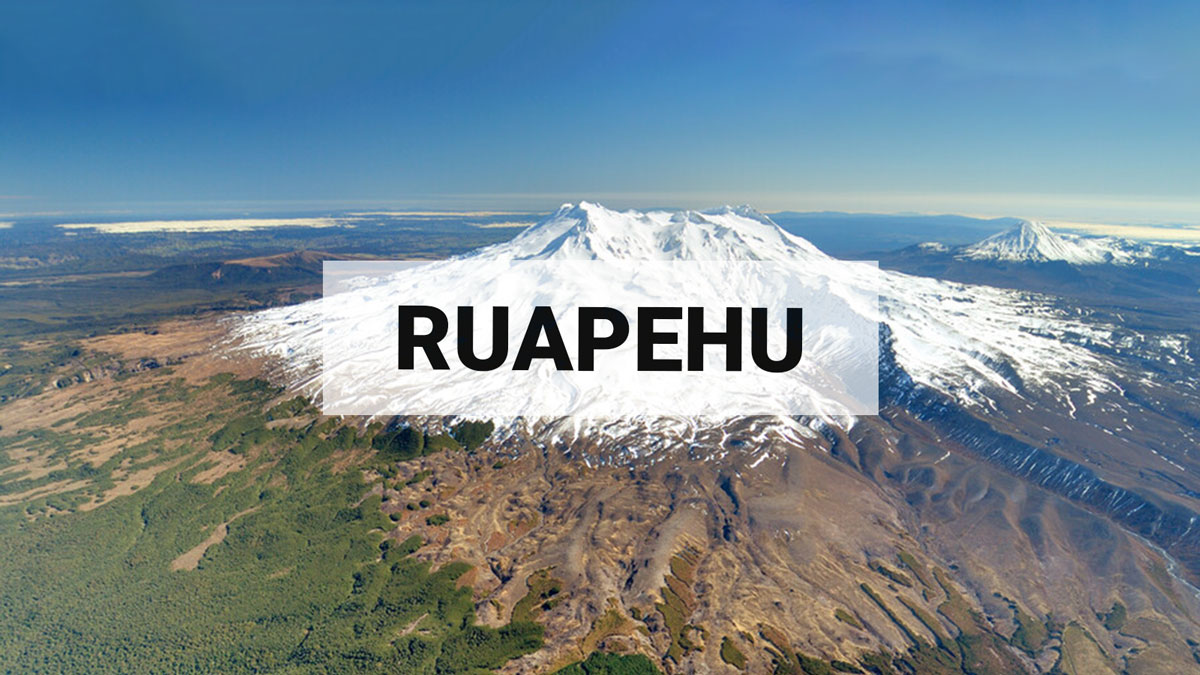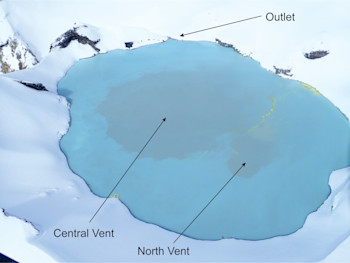
Mt Ruapehu status update: Minor volcanic unrest continues while Crater Lake temperature is low. Volcanic Alert Level remains at Level 1.
New observations from a Crater Lake visit along with results from recent gas measurement flights indicate volcanic activity at Ruapehu remains low. Crater Lake (Te Wai ā-moe) cooled to ~12°C in late September and is currently around 15°C. Recent monitoring observations indicate volcanic gas is passing into the lake. The Volcanic Alert Level remains at Level 1.
Ruapehu’s Crater Lake (Te Wai ā-moe) has a long history of heating and cooling, with each cycle usually lasting several months. In the most recent cycle, the lake temperature reached a high of 41°C in April and then cooled steadily to 12 °C by late September. Over the last two weeks, the lake has warmed slightly to 15 °C, which is a normal observation.
Since the lake started cooling, we have conducted four flights to measure the flux of volcanic gases through Crater Lake. We also collected lake water samples for further laboratory analysis. Results from recent gas flights show variations in H2S (hydrogen sulphide), CO2 (carbon dioxide) and SO2 gas (sulphur dioxide). The SO2 and H2S are relatively stable while CO2 is decreasing from a high in May this year. This is consistent with more geothermal, than magmatic chemical reactions, and is typical of activity at Mt Ruapehu over the past few years. Lake water chemistry has largely remained stable throughout this same period.
Crater Lake has two main submerged vents, namely North and Central vents. Observations of the lake over the last few months found that these vents were quiet. Late last week, our gas monitoring team observed clear upwelling and discolouration of the lake due to sediment mixing and bright yellow slicks of elemental sulphur over both vent areas.
These observations and measurements all indicate that the underlying vent areas are open to volcanic gases and geothermal fluids entering the lake.
The level of volcanic tremor intensity has been variable but has remained weak over the past three months, and small earthquakes continue to be located near the volcano.
None of these observations are unusual for Mt Ruapehu. All observations over the past months indicate that the volcano remains in minor volcanic unrest and at Volcanic Alert Level 1.
The Volcanic Alert Level remains at Level 1. The Volcanic Alert Level reflects the current level of volcanic activity and is not a forecast of future activity. Mt Ruapehu is an active volcano and has the potential to erupt with little or no warning when in a state of volcanic unrest. There is no change in the Aviation Colour Code and it remains at Green.
GNS Science and the National Geohazards Monitoring Centre continues to closely monitor Mt Ruapehu for further signs of activity. GeoNet monitors Mt Ruapehu via a network of seismic and acoustic sensors, GPS receivers, sensors in the lake and visits to the lake area, and gas flights.
Geoff Kilgour Duty Volcanologist
Media Contact: 021 574 541 or media@gns.cri.nz


